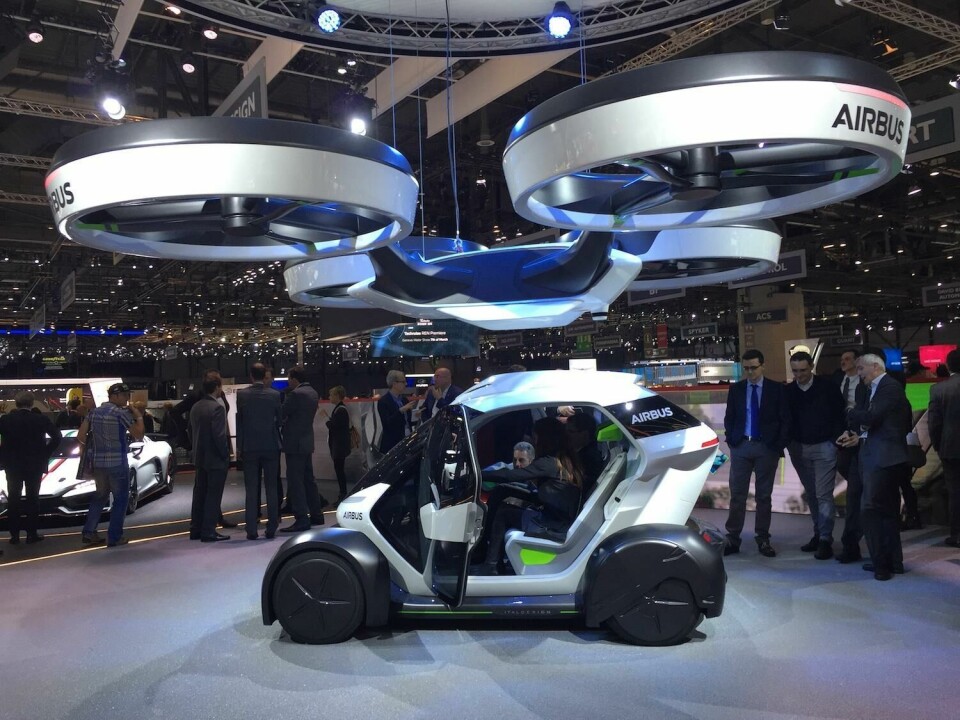
Geneva 2017: The Italdesign and Airbus flying car takes off
The Italdesign Airbus Pop-Up was certainly the most unusual concept at the show
Arguably the most iinteresting concept at the 2017 Geneva Motor Show was the Italdesign Airbus Pop-Up. In a sea of crazily-expensive, ultra-limited edition hypercars at one end of the spectrum, a land(fill) of ‘me-too’ production compact SUVs in the middle and a slew of ground-only autonomous EV concepts at the other end, the Pop-Up flying car offered a unique and refreshing alternative. An app-enabled, zero-emission vehicle that can fly or drive – and link with public transport too – the Pop-Up suggests a more considered solution to global urban congestion, and the pollution and time wasting it causes.

Of course, flying cars have been imagined and developed before. But the combination of aerospace manufacturing giant Airbus and automotive design and engineering expert Italdesign – now fully under the wing of parent group VW – lends the project way more gravitas than so many previous airborne transportation concepts.
The concept’s modular vehicle has three basic parts: a central monocoque carbon-fibre two-seat passenger capsule measuring 2647mm long, 1540mm wide and 1415mm high, which can couple with a 3115mm long x 1900mm at its widest, battery-powered carbon-fibre chassis ground module to turn it into a city car. Or, it can be carried by the third element; a 5000mm long x 4403mm wide VTOL air module propelled by eight counter-rotating rotors to turn into a self-piloted plane. The air module’s range, without payload, is 60 miles (100km) which would suit shorter urban and suburban journeys rather than longer distance commutes. On land, a top speed of 60mph (100km/h) is given, so progress where possible, would be rapid enough for a small city car.

After arrival, the air and ground modules and the capsule autonomously return to their recharging stations (with a charging time of 15 minutes) to await their next customers. Trips can be planned, paid for and hailed via an app that also suggests the best joined-up transport solution, but with the convenience of being able to stay within the same personal capsule throughout (to avoid unwanted public transport-style proximity with random strangers).

As to what happens next with the concept, both collaborative parties seem to be talking practically and with their feet firmly on the ground, rather than in ‘blue-sky’, ‘what-if’ reveries. Airbus’s Mathias Thomsen, whose title alone – general manager for urban air mobility – suggests a project that is intended to have some legs and longevity, said at the unveil: “Adding a third dimension to seamless multi-modal transportation networks will without a doubt improve the way we live and how we get from A to B. Successfully designing and implementing solutions that will work both in the air and on the ground requires a joint reflection on the part of both aerospace and automotive sectors, alongside collaboration with local government bodies for infrastructure and regulatory frameworks.”
Italdesign CEO Jorg Astalosch, for his part, expressed a desire for cars to fit better within their environment than at present: “Today, automobiles are part of a much wider ecosystem. If you want to design the urban vehicle of the future, the traditional car cannot alone be the solution for megacities. We found in Airbus the perfect partner who shares this modern vision.”



